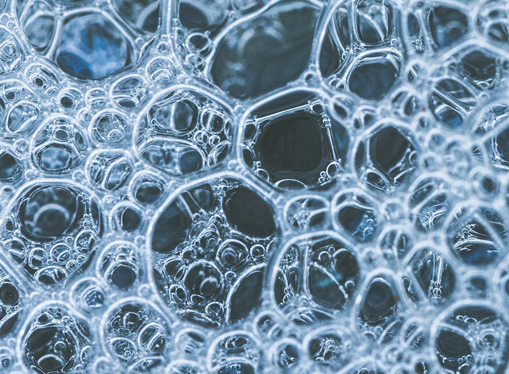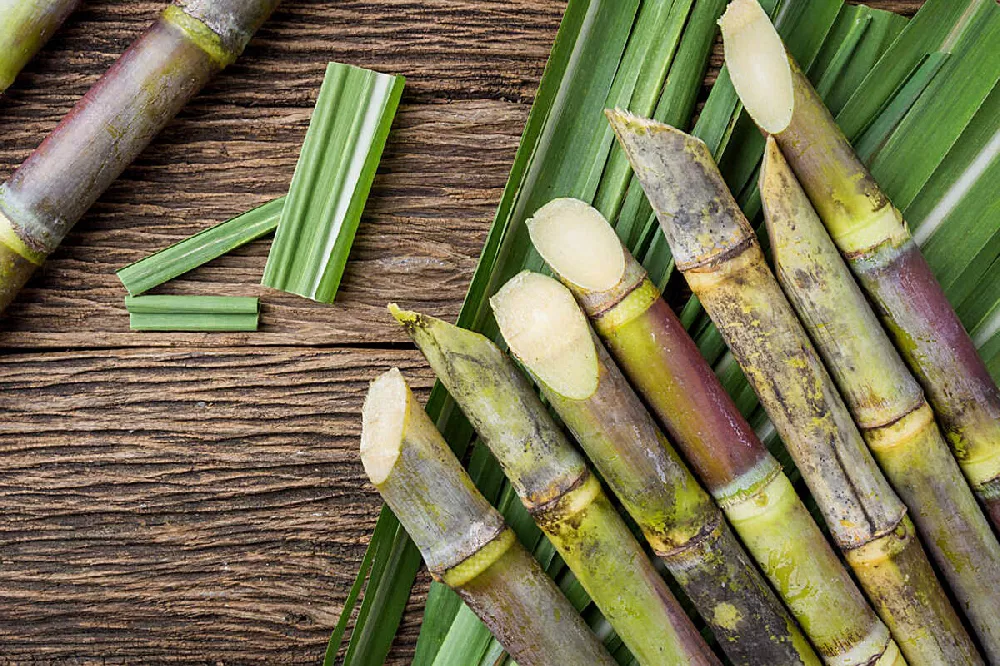What the Future Holds for sugar cane products in Global Trade
Introducing the Manufacturing Keys Behind Sugar Cane and Its Diverse Variety of Products
The manufacturing journey of sugar cane is complex and multi-faceted. It starts in the areas, where cautious harvesting methods set the stage for ideal sugar extraction. The procedure entails several stages, including juice extraction and refining - sugar cane products. Sugar cane's possible prolongs much beyond simple sweet taste. Advancements in handling and lasting methods are improving its function in modern sectors. What exists in advance for this flexible crop? The responses might shock those thinking about its future
The Trip of Sugar Cane: From Field to Manufacturing facility

As sugar cane persuades delicately in the exotic breeze, it begins a transformative journey from area to manufacturing facility. The vivid green stalks, rich in sucrose, are grown under ideal conditions, benefiting from enough sunshine and rainfall. Farmers very carefully monitor the growth, making sure the plants reach their peak maturation, which is essential for taking full advantage of sugar content.Once developed, the cane is planned for harvesting, where its coarse framework holds the assurance of wonderful items. The journey proceeds as the stalks are delivered to processing centers, where they undertake a collection of meticulous steps. At the manufacturing facility, the cane is cleaned, shredded, and pushed to remove the juice. This juice is after that clarified and evaporated, leading the way for condensation. Each phase of this journey is necessary, as it eventually figures out the quality of the sugar and various other products originated from this functional plant.
Collecting Techniques: The Primary Step in Production
Collecting sugar cane requires precision and skill, as the timing and technique directly influence the top quality of the last product. The process generally begins with identifying the optimal harvest time, which is important; sugar content comes to a head prior to the plant reaches complete maturity. Growers often count on experience and farming indications to determine when to harvest.Two primary strategies dominate the collecting landscape: handbook and mechanical methods. Hand-operated harvesting, though labor-intensive, enables for careful option of stalks and decreases damages. Employees utilize machetes to cut the cane close to the base, ensuring the stalks remain intact for processing.Mechanical harvesting, on the other hand, utilizes specialized equipment to cut and gather the cane rapidly. While this approach greatly enhances performance, it might cause greater levels of particles and reduced sugar web content. Eventually, the picked technique affects not just the amount but additionally the top quality of sugar cane delivered to processing centers.
The Removal Process: Opening the Sweetness
The removal process is crucial for transforming gathered sugar cane right into sweet juice. Different methods of juice removal can greatly affect the quality and yield of the final product. Understanding these techniques is essential for making best use of the benefits of sugar cane manufacturing.
Harvesting Strategies Explained
Releasing the sweetness of sugar cane starts with accurate harvesting strategies that ensure maximum yield and high quality. The process normally entails cutting the cane at ground level, making sure marginal damages to the plant and enabling regrowth. Harvesters typically make use of machetes or specialized equipments, relying on the range of the procedure. Timing is essential; harvesting occurs when the sugar content reaches its peak, usually during dry seasons. In addition, workers need to be educated to determine the very best stalks, staying clear of those that are also old or infected. Reliable transport to refining centers is additionally crucial, as hold-ups can bring about sugar destruction (sugar cane products). These thorough strategies inevitably lay the structure for creating top quality sugar and its diverse spin-offs
Juice Extraction Methods
Juice removal is an essential action in changing sugar cane right into its wonderful essence. This procedure usually involves several approaches, each made to successfully draw out the sugary fluid from the coarse stalks. The most common method is milling, where the sugar cane is crushed between hefty rollers to launch the juice. Another approach is diffusion, which utilizes warm water to dissolve the sugar from the cane fibers, making it a much more effective choice for massive operations. Additionally, some producers use screw presses, which use mechanical stress to remove juice. After extraction, the juice undergoes information to remove impurities prior to additional handling. Each approach reflects the sector's emphasis on making the most of yield and ensuring high-grade sugar production.
Refining Sugar: Transforming Raw Cane Into Granulated Gold
The refining process is necessary for converting raw cane sugar right into the pure, granulated item consumers acknowledge. sugar cane products. This includes a collection of extraction and purification actions to remove pollutants, adhered to by condensation and drying strategies that enhance the sugar's high quality. Understanding these techniques exposes the elaborate improvement from cane to the golden granules that sweeten countless foods and beverages
Removal and Filtration Process
An important phase in the sugar manufacturing trip involves the removal and purification of juice from freshly gathered sugar cane. This procedure starts with crushing the cane to release its wonderful juice, normally making use of large rollers or mills. visit their website The extracted juice includes not only sugar however additionally contaminations, including fibers and mud. To guarantee the juice is appropriate for more refining, it undergoes a filtration process. This includes passing the juice with different filters and clarifiers to eliminate strong bits and undesirable materials. Chemicals such as lime may be added to help in the explanation process. The result is a clear, raw cane juice that serves as the structure for creating polished sugar, all set for succeeding phases of processing.

Formation and Drying Out Methods
After the extraction and purification procedures produce clear raw cane juice, the next action in sugar manufacturing is condensation. This process involves steaming the juice to vaporize water, allowing sugar particles to develop crystals. As the liquid thickens, it gets to supersaturation, motivating sugar to crystallize. The mix is after Get More Information that cooled down, promoting more crystal formation. Once formation is total, the sugar crystals are separated from the continuing to be syrup with centrifugation.The last includes drying out, where the crystals are subjected to warm air to remove residual moisture. This step is vital, as it assures the product accomplishes the wanted granulation and rack security. The outcome is pure, granulated sugar, all set for product packaging and distribution.
Past Sweetness: Diverse Products From Sugar Cane
While sugar cane is mainly acknowledged for its sweet taste, its versatility prolongs much past plain sweet taste. This resilient plant works as the source for a myriad of items that accommodate diverse industries. Ethanol, acquired from sugar cane fermentation, plays an important role in renewable resource, working as a cleaner option to fossil fuels. Furthermore, molasses, a result of sugar refining, is utilized in animal feed, in addition to in cooking and fermentation processes.Sugar cane's coarse deposit, referred to as bagasse, is not lost; it is transformed into biodegradable packaging materials and acts as a biomass fuel resource. Furthermore, different sugars and syrups gotten from sugar cane find applications in the food and beverage industry, adding to flavor and preservation. The plant's leaves can be utilized for thatching, while its juice is eaten as a revitalizing drink in numerous cultures. Sugar cane exemplifies agricultural possibility past its sugary online reputation.
Technologies in Sugar Cane Handling
As improvements in innovation remain to improve different industries, sugar cane handling is experiencing a substantial improvement. Modern developments, consisting of automated harvesting and precision farming, are improving performance and yield. Drones and sensing units keep track of plant health and wellness, permitting farmers to enhance watering and nutrient application, eventually improving productivity.In handling facilities, advanced machinery and devices streamline procedures. Advancements such as chemical handling and advanced purification methods improve the removal of sugar while reducing waste. On top of that, the adoption of real-time information analytics allows manufacturers to monitor processes closely, making sure quality assurance and reducing downtime.Biotechnology is additionally playing an important role; genetic engineerings improve sugar cane's resistance to pests and environmental stress factors. These developments not just add to higher sugar returns but additionally facilitate the manufacturing of varied spin-offs from the cane, increasing its commercial applications. In general, these developments are leading the way for a more effective and lasting sugar cane handling industry.
The Future of Sugar Cane: Sustainability and Bioproducts
The future of sugar cane production is progressively intertwined with sustainability and the advancement of bioproducts. As international demand for eco-friendly options rises, the sugar cane market is rotating in the direction of practices that decrease ecological effect. Technologies in farming techniques, such as precision agriculture and integrated pest management, objective to a knockout post enhance return while lowering source consumption.Furthermore, sugar cane is being explored as a resources for biofuels, bioplastics, and various other lasting items. These bioproducts not just offer a sustainable option to traditional nonrenewable fuel sources and plastics but likewise add to a round economy by making use of waste materials.Research and growth in biotechnology are leading the method for enhanced sugar cane varieties that call for less water and fertilizers, further advertising sustainability. By embracing these developments, the sugar cane market can protect its future while dealing with vital ecological difficulties, showing its possible as a keystone of lasting advancement.
Frequently Asked Inquiries
What Are the Environmental Impacts of Sugar Cane Farming?
The ecological impacts of sugar cane farming consist of deforestation, dirt degradation, and water air pollution. Furthermore, making use of chemicals can damage biodiversity, while monoculture methods decrease community resilience, posturing lasting sustainability difficulties for agricultural techniques.

Exactly How Does Sugar Cane Contrast to Other Sugar Nutritionally?
Sugar cane, rich in carbs, provides energy yet does not have important nutrients contrasted to choices like honey or syrup, which offer vitamins and minerals. Its high glycemic index likewise increases problems over blood sugar level spikes.
What Are the Health Advantages of Consuming Sugar Cane Products?
The health and wellness advantages of consuming sugar cane items include enhanced food digestion, enhanced power degrees, and potential antioxidant properties. Furthermore, they may support hydration and offer vital nutrients, contributing positively to overall well-being.
How Is Sugar Cane Waste Utilized After Handling?
After handling, sugar cane waste is made use of in numerous methods, including biofuel production, animal feed, and natural plant foods. This sustainable strategy decreases environmental effect while making best use of resource efficiency within the sugar industry.
What Are the Historical Origins of Sugar Cane Cultivation?
